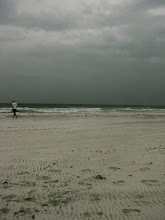These were common western birds I did not--still do not--know the name of. They were soft brown to tan, larger than a sparrow but smaller than a magpie. I'd seen them often enough in the mountain states, they were like a swallow or a mockingbird but were neither of those avians. But as I drove by (Fru did not see them and I did not tell her of them until much later) I could see the desperation of the situation, could tell that this was the one bird's mate who had been hit (maybe the other was already dead, but I think it was still alive) and the healthy bird was trying to figure out what to do, trying to help its mate, not ready to give up.
All of this in an instant. And--despite myself--I found it undeniably heartbreaking. Seriously. It can still bother me to this day: the flapping, the alighting and taking off, the unmitigated sadness and fright of the flying bird's movements. I'm sorry, but it affected me deeply.
I realize that I'm humanizing, that I'm transposing emotions onto the living bird. But that's what people do. It's humanity, even when the subject isn't human. And you can't tell me there was not emotion, some form of loss or impending loss, in that creature's mind and heart. Perhaps, not long after that, the bird gave up, moved on, found a new mate--most likely that's the case and that such animals don't have memories of specific distress (be it by nature or necessity of survival)--but in my mind and memory, the bird still suffers.
I think one reason why it affected me and why it stuck with me is that Fru and I had just been married. We lived in Missoula then, but were married in a Lutheran church in Seattle. Fru's father was throwing us a belated reception in Champaign--a large affair with lots of family (most from Fru's side)--and we were on our way to the event. But I had been with Fru for over two years by then. I'd moved from Florida, came back from New York City, to live with her. We'd moved out to Montana--first to Stevensville, then Missoula--together and were doing fine. Happy and in love. But before our wedding, Fru's mother had died from a reoccurrence of breast cancer that had spread beyond hope. It was not totally unexpected, but was not also a given. So, we were newlyweds, her mother had died, we were on our way to a celebration where one very important member would be missing. And I saw this mini-drama of birds along the highway. I extrapolated it to my own situation and fears and sense of personal tragedy.
Life is a tough thing sometimes. Some people believe its sadness or difficulty, its haphazardness and violence and competition are life's norm and we gather together and make rules and believe in our respective beliefs to allay this natural condition. Maybe so. Maybe not so. But even the death of that bird and the frantic sadness of its mate is enough to make you wonder.

No comments:
Post a Comment